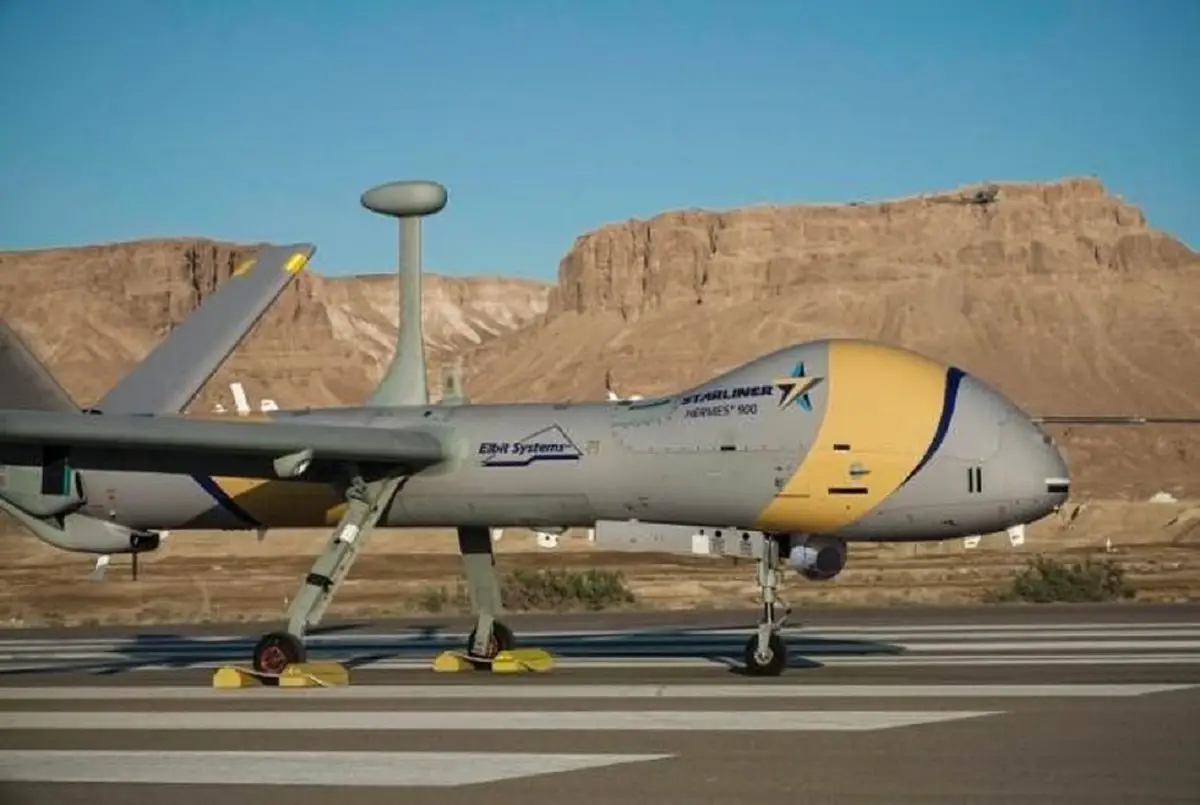The Indian Navy is set to induct two Hermes 900 Starliner unmanned aerial vehicles (UAVs) by the end of February. Manufactured by Elbit Systems and produced in India by Adani Defence and Aerospace under the name ‘Drishti 10,’ these UAVs are poised to become a crucial asset for the Indian Navy in intelligence, surveillance, and reconnaissance (ISR) operations across the Indian Ocean. The unveiling ceremony, held on January 10th, saw India’s Chief of the Naval Staff, Admiral R Hari Kumar, officially introduce the Drishti 10 UAVs. Adani Defence and Aerospace, responsible for the manufacturing process, will hand over the UAVs to the Indian Navy in Porbandar, Gujarat. The strategic location along the Arabian Sea enhances the navy’s ability to conduct coastal surveillance efficiently.
The Hermes 900 Starliner, also known as Drishti 10, is positioned as a “force multiplier” for the Indian Navy. Its capabilities extend beyond conventional UAV functions, offering over-the-horizon, persistent multi-mission, multi-sensor capabilities with a class-leading payload carrying capacity. These UAVs are specifically designed for maritime patrol, border protection, and intelligence gathering, making them invaluable assets for the naval forces. Elbit Systems, the manufacturer of Hermes 900 Starliner, has ensured that the UAV complies with NATO’s STANAG 4671, allowing it to seamlessly integrate into civilian airspace. The inclusion of a Detect & Avoid (D&A) system, equipped with an Air-to-Air RADAR sensor and a Terrain Awareness and Warning System (TAWS), further ensures safe and efficient operations alongside manned aircraft.

The Hermes 900 Starliner boasts an active de-icing system, direct and indirect lightning strike survivability, zero visibility landing capability, and redundant Automatic Take-Off and Landing (ATOL) capability. Such features enable the UAV to operate effectively under adverse weather conditions, making it a reliable asset for maritime operations. The Hermes 900 Starliner is equipped with a powerful Heavy Fuel Engine (HFE), offering improved climb rate, extended endurance, higher ceiling, and maximum speed. The state-of-the-art “Glass Cockpit” Ground Control Station (GCS) ensures seamless operation, with each crew console capable of functioning as both pilot and payload operator. The Hermes family of UAS has accumulated over 600,000 operational flight hours worldwide over the last three decades.
In the context of the evolving geopolitical landscape, the acquisition of advanced autonomous systems becomes imperative for nations, as highlighted by the article. The need to match the growing inventory of UAVs in neighboring countries, particularly China and Pakistan, necessitates continuous innovation and expansion of assets for the Indian Armed Forces. As the Indian Navy gears up to integrate the Hermes 900 Starliner into its fleet, it marks a significant leap forward in the country’s maritime surveillance capabilities, aligning with the global trend of utilizing cutting-edge technology in defense operations. The strategic importance of such autonomous systems cannot be overstated, as they play a pivotal role in maintaining maritime security and supremacy in the contemporary world.















